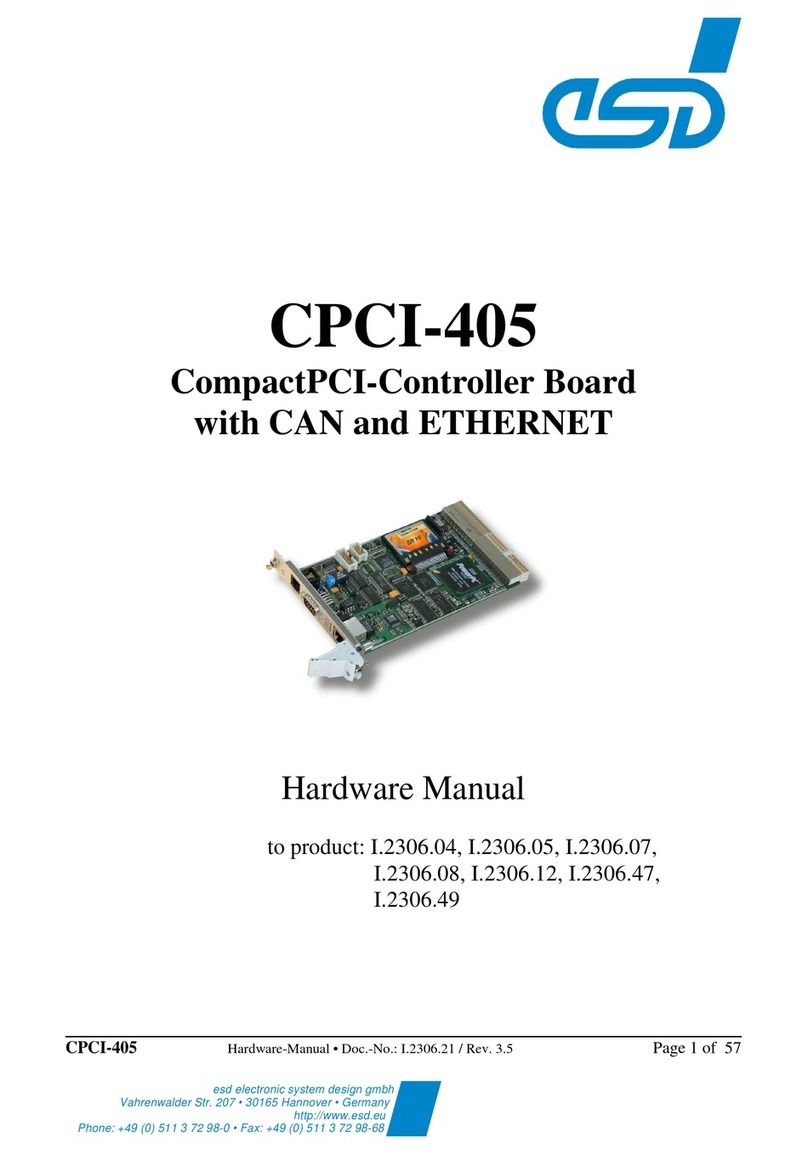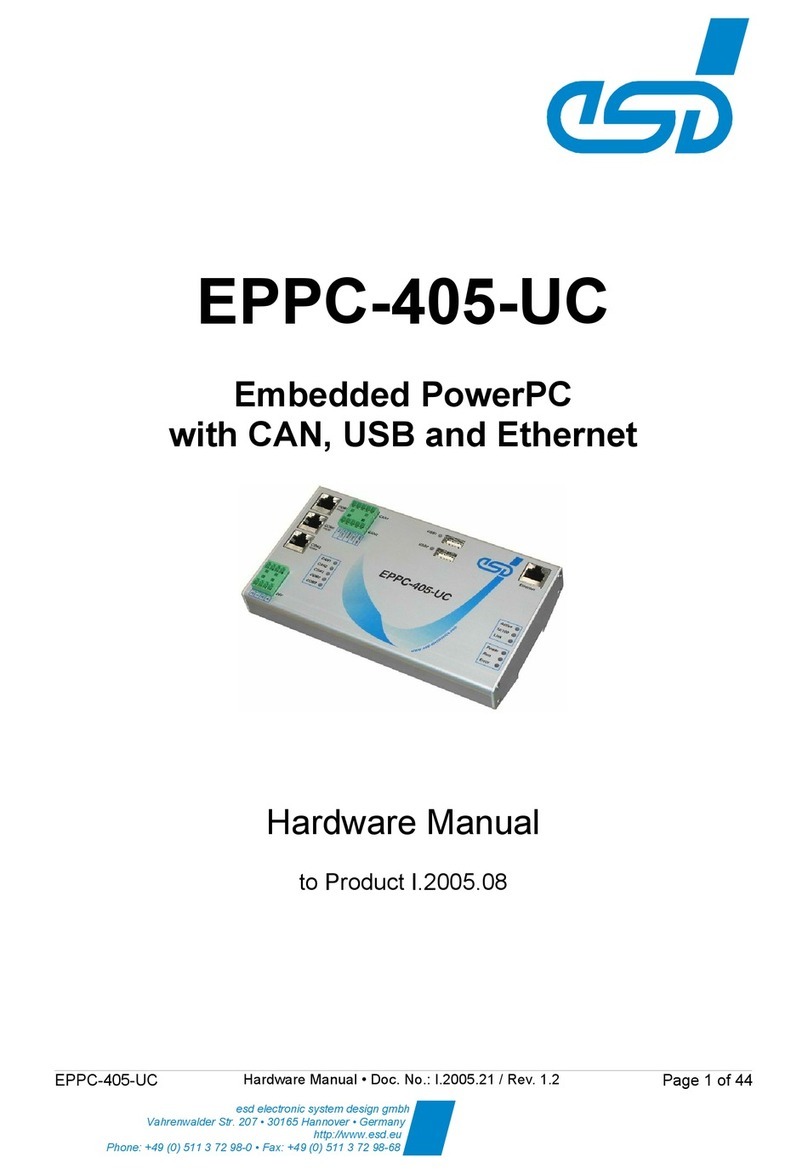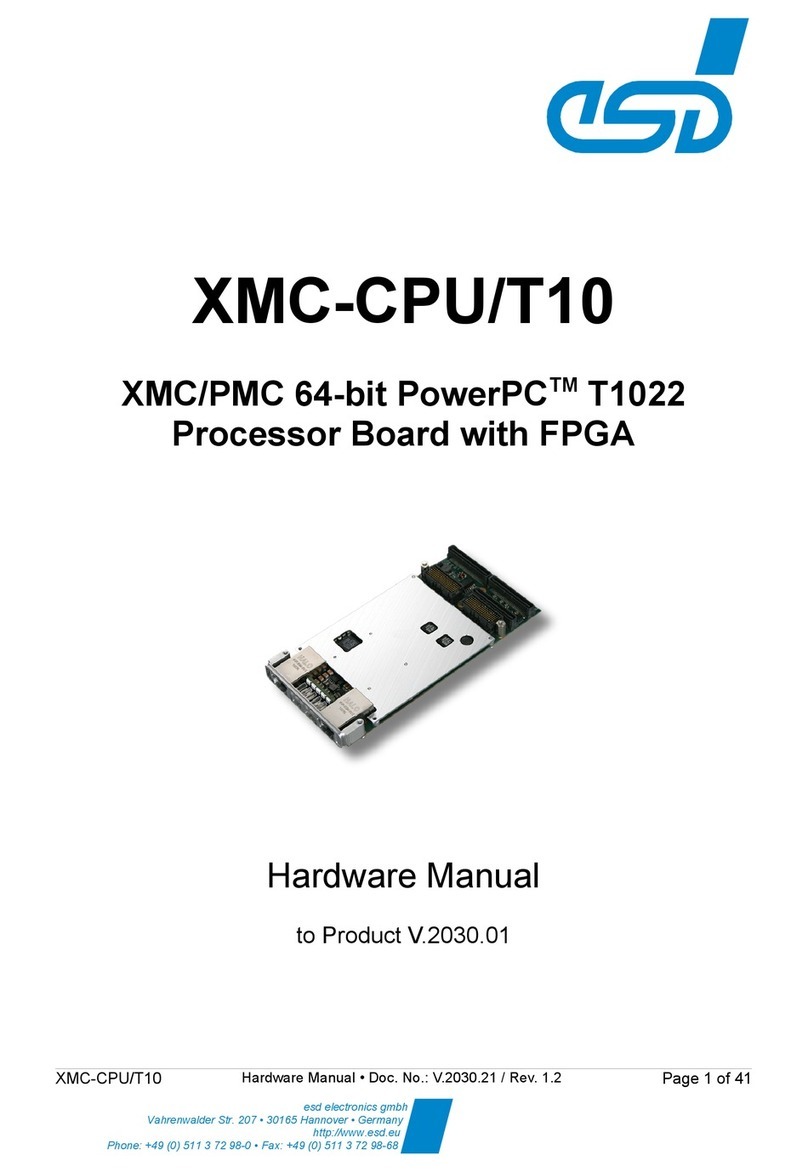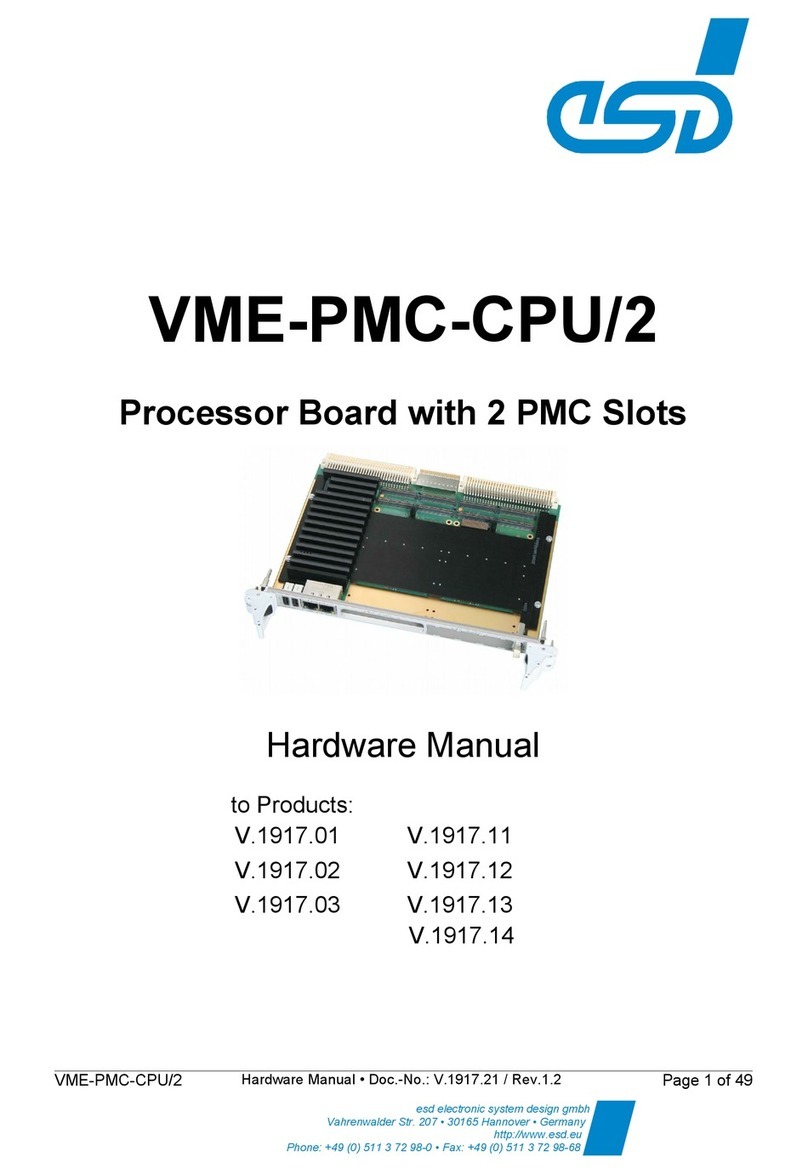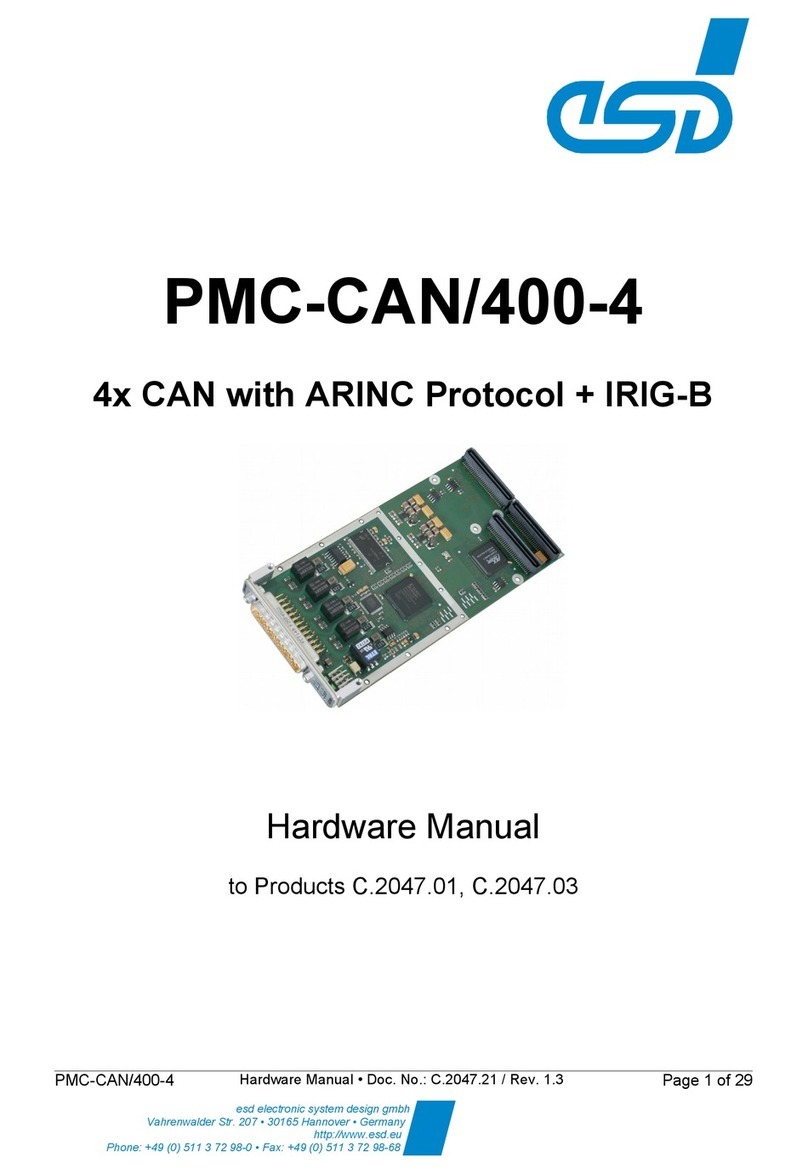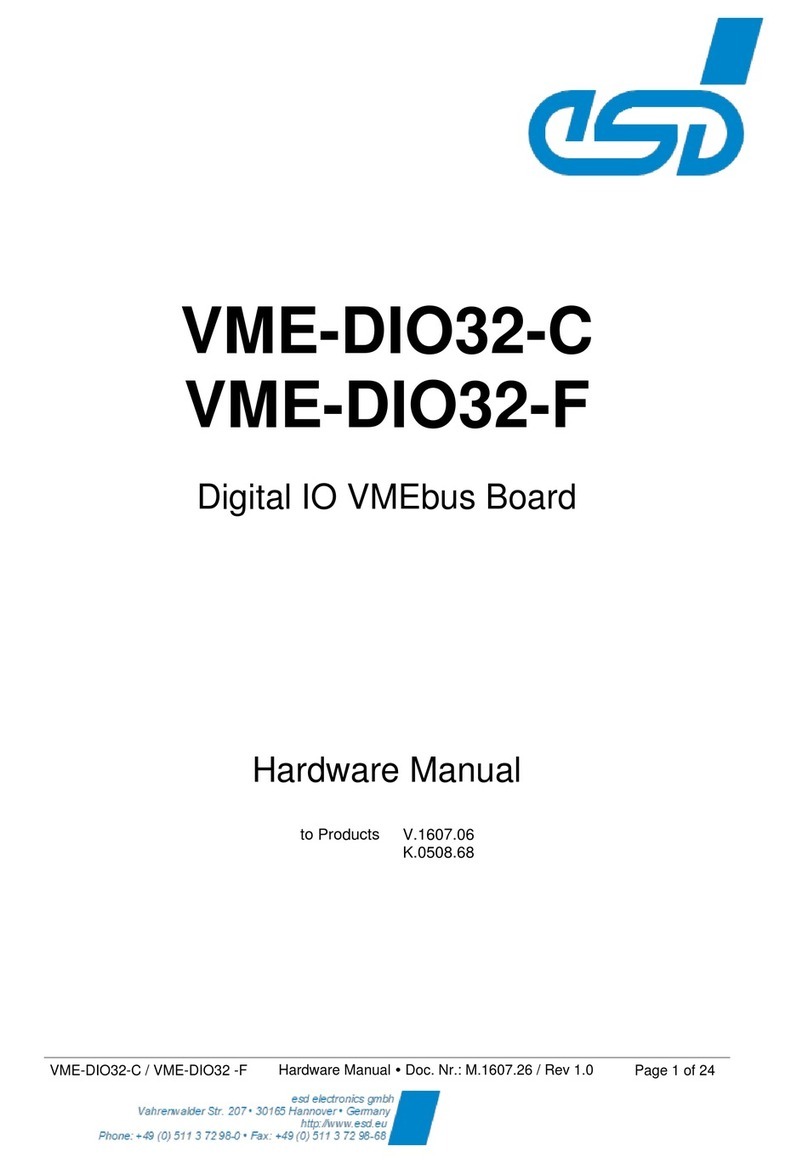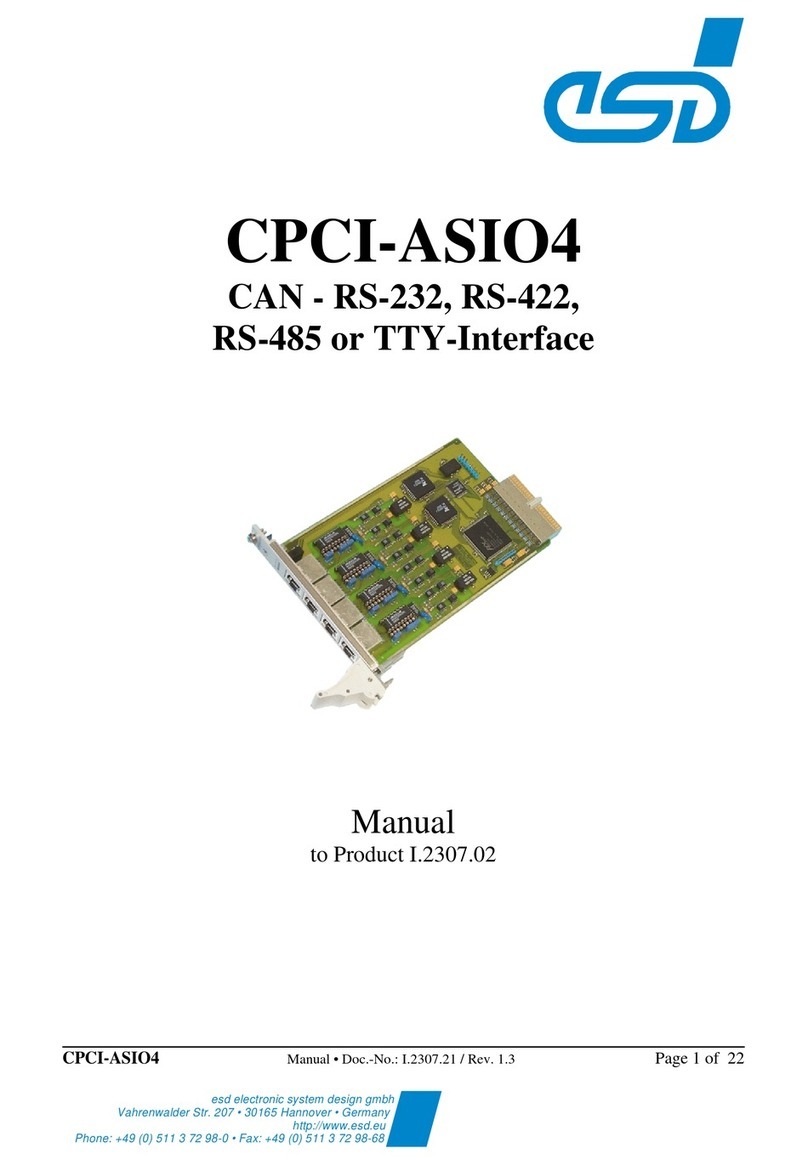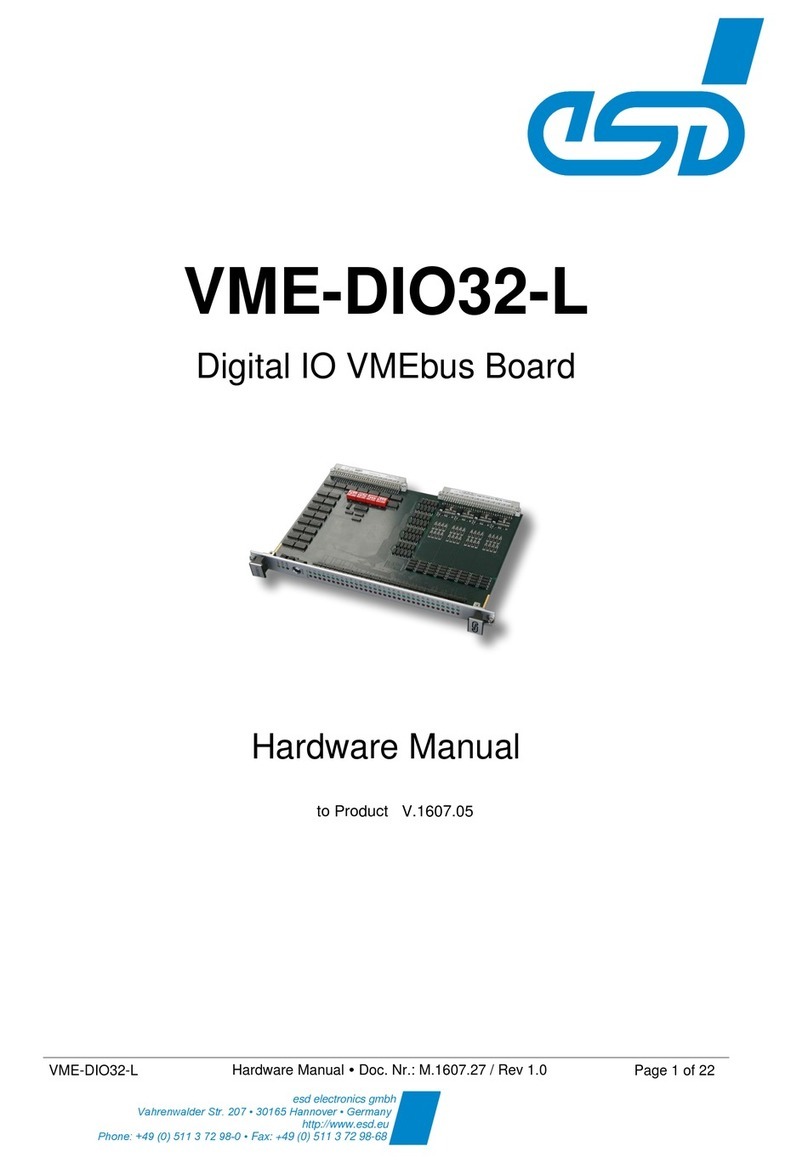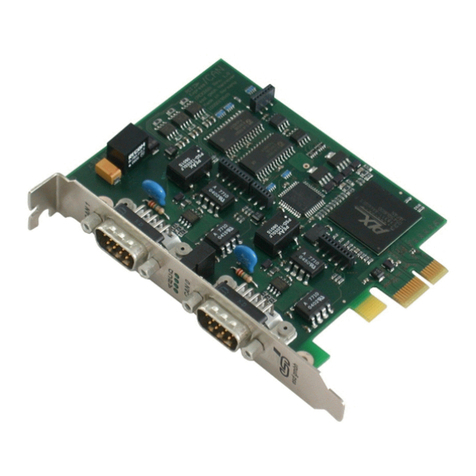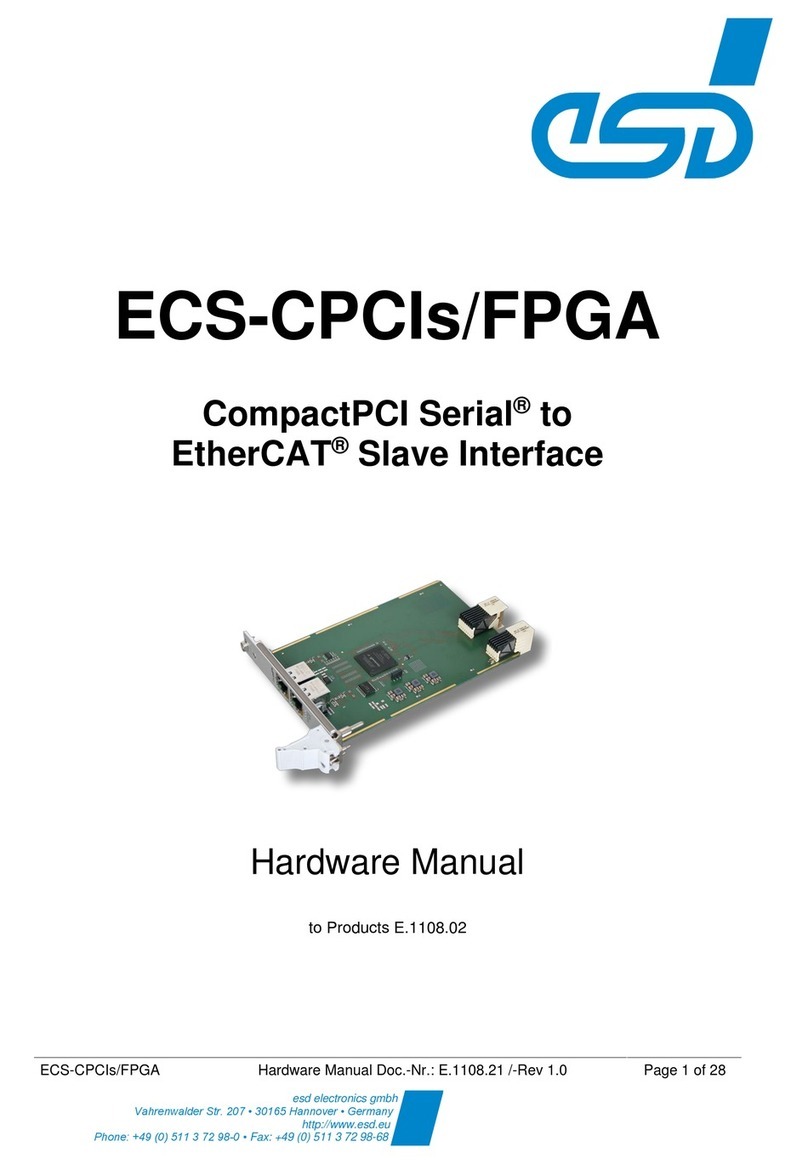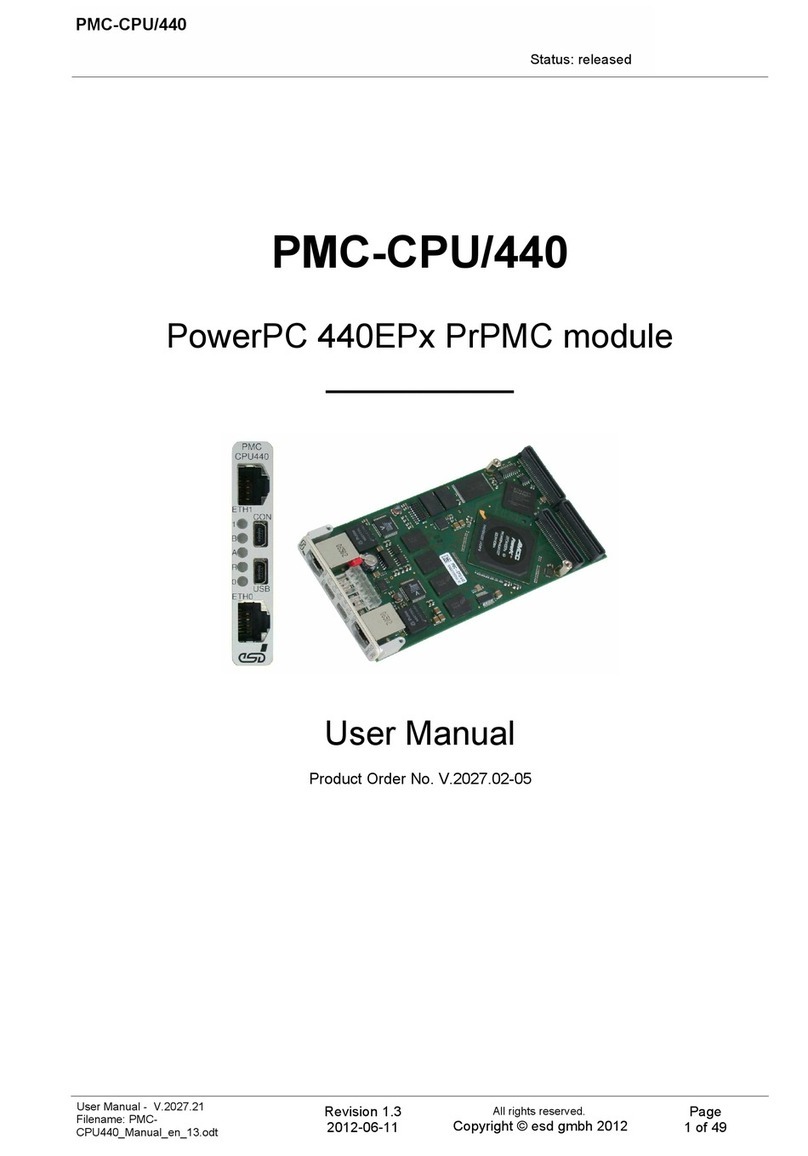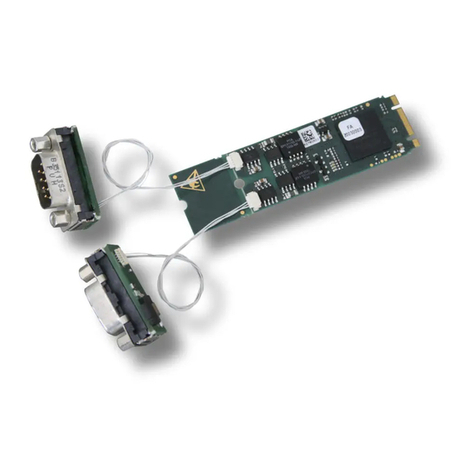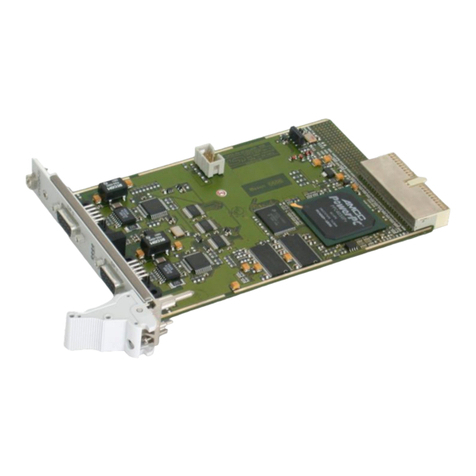Table of contents
Safety Instructions...........................................................................................................................5
1. O er iew......................................................................................................................................8
1.1 Description of the Module......................................................................................................8
1.2 PCB View with Connectors....................................................................................................9
2. Hardware Installation..................................................................................................................10
3. Technical Data...........................................................................................................................12
3.1 General Technical Data.......................................................................................................12
3.2 PCI Express Interface..........................................................................................................12
3.3 CAN Interface......................................................................................................................12
3.4 Software Support.................................................................................................................13
4. Front Panel View with LED-Display............................................................................................14
5. Connector Assignments.............................................................................................................15
5.1 CAN.....................................................................................................................................15
6. Correct Wiring of Electrically Isolated CAN Networks.................................................................16
6.1 Standards concerning CAN Wiring......................................................................................16
6.2 Hea y Industrial En ironment (Double Twisted Pair Cable).................................................17
6.2.1 General Rules.............................................................................................................17
6.2.2 De ice Cabling............................................................................................................18
6.2.3 Branching....................................................................................................................18
6.2.4 Termination.................................................................................................................18
6.3 Light Industrial En ironment (Single Twisted Pair Cable).....................................................19
6.3.1 General Rules.............................................................................................................19
6.3.2 Cabling........................................................................................................................20
6.3.3 Branching....................................................................................................................20
6.3.4 Termination.................................................................................................................20
6.4 Electrical Grounding.............................................................................................................21
6.5 Bus Length...........................................................................................................................21
6.6 Examples for CAN Cables...................................................................................................22
6.6.1 Cable for light industrial En ironment Applications (Two-Wire)...................................22
6.6.2 Cable for hea y industrial En ironment Applications (Four-Wire)................................22
7. CAN Troubleshooting Guide.......................................................................................................23
7.1 Termination..........................................................................................................................23
7.2 Electrical Grounding.............................................................................................................24
7.3 Short Circuit in CAN Wiring..................................................................................................24
7.4 CAN_H/CAN_L-Voltage ......................................................................................................24
7.5 CAN Transcei er Resistance Test.......................................................................................25
7.6 Support by esd.....................................................................................................................25
8. Declaration of Conformity...........................................................................................................26
9. Order Information.......................................................................................................................27
CAN-PCIe/200 Hardware Manual • Doc. No.: C.2042.21 / Re . 1.5 Page 7 of 28
